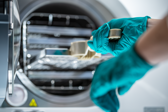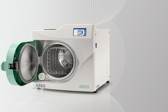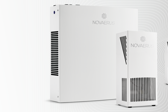Categories
Most Recent
Defence against infectious pathogens
27th Apr 2022 in Dental, Animal Health, HealthcareWe all know that while other potentially problematic particles exist such as yeasts, fungi and pollens, it is primarily bacteria and viruses that are responsible for infectious illnesses.
Bacteria are microbes with simplistic cell structures without a nucleus or any membrane bound organelles, and their genetic information is usually contained within a single loop of DNA. In some cases, a strain of bacteria may evolve to form extra genetic material named a plasmid which can be antimicrobial resistant. Only a very small percentage of bacteria are dangerous to humans, but common bacterial illnesses include E. coli, Shigella and Salmonella.
Unlike bacteria, viruses are microscopic parasites that need a host environment in order to survive for any extended period of time. Although smaller in size than bacteria, viruses are generally more deadly. During the past few decades alone there have been numerous viral outbreaks, including COVID-19.
Viruses have been found everywhere from soil and seawater, to the very air we breathe. Structurally, viruses significantly differ from bacteria. Although not technically living organisms they are complex and comprised of nucleic acid, RNA or DNA (never both), and a protein coat.
Enveloped viruses have an additional layer of fat or protein which helps protect them from destruction. Common viral illnesses include influenza and cold viruses. A recent spike in cases of hepatitis in children has been blamed on the adenovirus and has resulted in 10 children needing liver transplants.
So, what do we do about them?
At the risk of covering old ground, hand hygiene is essential, washing thoroughly for 20 seconds with soap or hand sanitiser can prevent the transmission of pathogens to a new host/other surfaces. Hand sanitiser, in particular, should be able to kill at least 99.9% of pathogens and have a high alcohol content, as this will make sure that even enveloped viruses are properly eliminated because alcohol dissolves the protective fat or protein layer.
Dental professionals are known to be extra careful regarding cross contamination control in the practice and this is crucial. Viruses such as Hepatitis C can be transferred by any instruments contaminated with blood, while bacteria such as salmonella can easily colonise on instruments that come into contact with saliva or other fluids.
Viruses and bacteria are eliminated by high temperatures (over 65°C) as this causes their structures to deteriorate. Processing instruments through both a washer disinfector and an autoclave provides the best possible level of protection by guaranteeing that instruments are treated more than once before reuse.
Turn to Eschmann
Eschmann has everything that you need to keep your workplace at the forefront of infection control. Our range of solutions includes industry-leading Little Sister autoclaves, washer disinfectors, scientifically proven air disinfection units, hand sanitiser, surface wipes and more – giving you ultimate peace of mind in every area of your practice.
You can also protect your investment with Eschmann’s exceptional Care & Cover package which offers unrivalled maintenance, breakdown cover and more.
Though bacteria and viruses are diverse, modern infection control solutions have given us the tools we need to effectively defend against the spread of disease. By investing in high quality products and systems, you can guarantee that your workplace remains safe against bacteria, viruses and other pathogens.
Browse our website to learn more about our solutions and service offering. Contact us for more information.









